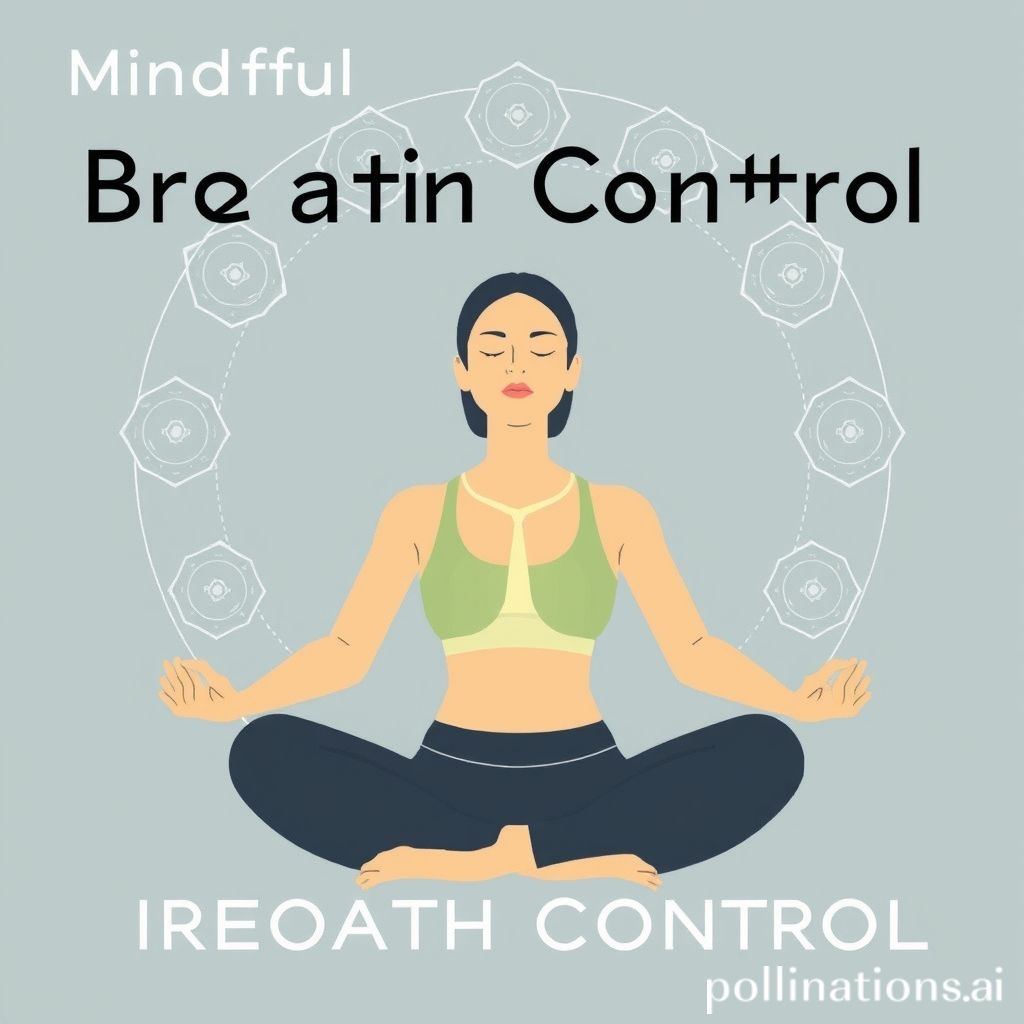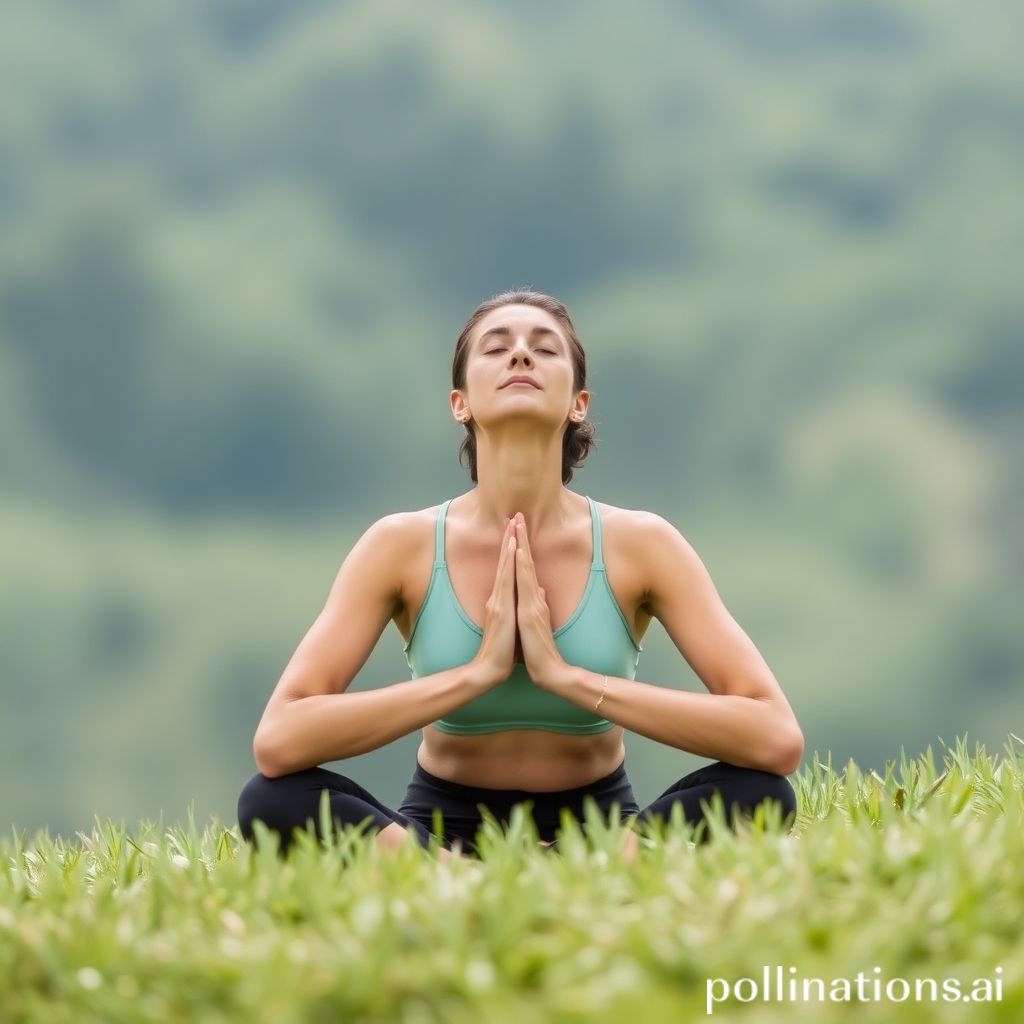Mindful breath control, also known as pranayama, is a practice that involves controlling the breath to improve physical and mental well-being. It is an ancient technique that has been used for centuries in various cultures and religions.
Mindful breath control has been shown to reduce stress, anxiety, and depression, as well as improve lung function and overall health. This practice can be done anywhere and at any time, making it a convenient and accessible tool for anyone looking to improve their well-being.
BENEFITS OF MINDFUL BREATHING
1. Stress Reduction through Deep Breathing
Mindful breathing has been proven to be an effective technique for reducing stress. By taking slow, deep breaths, you activate the body’s relaxation response, which helps to calm the mind and promote a sense of peace and tranquility. Deep breathing can also help to lower blood pressure and reduce the production of stress hormones, leading to a greater overall sense of well-being.
2. Improved Focus and Concentration
Practicing mindful breathing can greatly optimize your ability to focus and concentrate. By bringing your attention to the present moment and focusing on the sensation of your breath, you train your mind to become more focused and less easily distracted. This can be particularly beneficial for tasks that require sustained attention and mental clarity.
3. Enhancing Emotional Well-being
Mindful breathing can have a profound impact on your emotional well-being. By cultivating a greater awareness of your breath, you develop the ability to observe your thoughts and emotions without judgment. This allows you to become more in tune with your emotions and better equipped to navigate challenging situations with a greater sense of calm and resilience.
4. Physical Health Benefits
Engaging in mindful breathing practices on a regular basis can have numerous physical health benefits. Deep breathing increases oxygen flow to the brain and muscles, promoting overall cardiovascular health and improving lung function. It can also help to reduce muscle tension and promote relaxation throughout the body, aiding in the relief of physical symptoms associated with stress and anxiety.
5. Connection to the Present Moment
Mindful breathing is a powerful tool for cultivating mindfulness and connecting with the present moment. By focusing on the sensation of your breath, you anchor yourself in the here and now, allowing you to fully experience and appreciate each moment as it unfolds. This can help to reduce feelings of anxiety and overwhelm, and foster a greater sense of gratitude and contentment.
| BENEFITS | DESCRIPTION |
|---|---|
| Stress Reduction through Deep Breathing | Mindful breathing activates the relaxation response, reducing stress and promoting a sense of calm. |
| Improved Focus and Concentration | Mindful breathing enhances focus and concentration, allowing for better performance in tasks. |
| Enhancing Emotional Well-being | Mindful breathing fosters emotional awareness and equips individuals to manage emotions effectively. |
| Physical Health Benefits | Deep breathing improves cardiovascular health, lung function, and helps relieve physical tension. |
| Connection to the Present Moment | Mindful breathing cultivates mindfulness, reduces anxiety, and promotes gratitude and contentment. |

GETTING STARTED WITH MINDFUL BREATHING
Mindful breathing is a powerful technique that can help to calm the mind, reduce stress, and improve overall well-being. To begin your journey into mindful breathing, follow these steps:
1. Finding a Quiet Space
Find a quiet space where you can relax and focus on your breath without distractions. This could be a peaceful corner of your home or a serene outdoor setting.
2. Comfortable Seating or Posture
Choose a comfortable seating position or posture that allows you to sit upright with a straight spine. This could be on a cushion on the floor, a chair, or even lying down if that is more comfortable for you.
3. Initial Focus on Natural Breath
Start by simply observing your natural breath. Pay attention to the sensation of the breath entering and leaving your body. Notice the rise and fall of your abdomen or chest with each breath.
4. Gradual Lengthening of Inhalation and Exhalation
Once you feel grounded in your natural breath, begin to gradually lengthen your inhalation and exhalation. Take slow, deep breaths, allowing the air to fill your lungs and then releasing it fully. Focus on the sensation of the breath as it flows in and out.
5. Staying Patient with the Process
Remember that mindful breathing is a practice that takes time and patience. It is normal for the mind to wander during the process. Whenever you notice your mind wandering, gently bring your attention back to your breath without judgment.
Imbibing MINDFUL BREATHING INTO DAILY ROUTINE
Integrating mindful breathing practices into your daily routine can greatly optimize your overall well-being and promote a sense of calm and balance. By consciously focusing on your breath, you can cultivate a deeper connection with yourself and the present moment. Here are some subheadings to guide you in coalescing mindful breathing into different parts of your day:
1. Morning Mindful Breathing Ritual
Start your day with a refreshing and grounding mindful breathing ritual. Find a quiet space, sit comfortably, and close your eyes. Take a deep breath in through your nose, allowing your abdomen to rise, and exhale slowly through your mouth. Repeat this cycle several times, focusing on the sensation of your breath entering and leaving your body. Set an intention for the day and visualize yourself moving through it with ease and clarity.
2. Midday Stress Buster
When stress starts to build up throughout the day, take a moment to pause and reset with a midday stress-busting mindful breathing practice. Find a quiet corner or step outside for some fresh air. Inhale deeply, counting to four, and exhale slowly, counting to six. Allow any tension or worries to melt away with each breath. Feel the sensation of your breath grounding you in the present moment.
3. Evening Relaxation Routine
Wind down and prepare for a restful night’s sleep with an evening relaxation routine that incorporates mindful breathing. Create a cozy and calming environment in your bedroom. Sit or lie down comfortably, and take a few deep breaths to release any remaining tension from the day. As you breathe out, imagine letting go of any thoughts or concerns that may be occupying your mind. Allow your breath to guide you into a state of deep relaxation.
4. Mindful Breathing in Everyday Activities
Extend the practice of mindful breathing beyond dedicated sessions and incorporate it into your everyday activities. Whether you’re walking, eating, or doing household chores, bring your attention to your breath. Notice the sensation of the air entering and leaving your body as you engage in these activities. This can help bring a sense of mindfulness and presence to even the most ordinary tasks.
5. Building Consistency
Consistency is key in the realm of melding mindful breathing into your daily routine. Start with small steps and gradually increase the duration and frequency of your practice. Set reminders or create a schedule to ensure you make time for mindful breathing every day. Over time, it will become a natural and integral part of your routine, supporting your overall well-being and inner peace.

COMMON CHALLENGES AND SOLUTIONS
In the realm of chakra balancing and mindfulness, individuals may encounter various challenges that hinder their progress. These challenges can range from a restless mind to physical discomfort, but with the right solutions, they can be overcome. Here are some common challenges and their respective solutions:
1. Dealing with a Restless Mind
One of the biggest hurdles in achieving chakra balance is a restless mind. The constant flow of thoughts and distractions can make it difficult to focus and find inner peace. To address this challenge, integral to incorporate practices such as meditation and deep breathing exercises. These techniques help calm the mind and bring it into a state of stillness.
2. Overcoming Impatience
Patience is key pertaining to chakra balancing. Integral to understand that achieving balance and harmony takes time and consistent effort. Impatience can hinder progress and lead to frustration. To overcome this challenge, individuals should practice self-compassion and remind themselves that the journey towards chakra balance is a gradual process.
3. Addressing Physical Discomfort
Physical discomfort can be a significant challenge when trying to achieve chakra balance. This discomfort can manifest in various ways, such as tension in the body or chronic pain. To address this challenge, individuals can probe practices like yoga or tai chi, which help release physical tension and promote overall well-being. Additionally, seeking professional help from experts in fields like acupuncture or massage therapy can provide targeted relief.
4. Integrating Mindful Breath Control into a Busy Schedule
A busy schedule can often make it challenging to find time for chakra balancing practices. Nonetheless, integrating mindful breath control into a busy routine is possible. Taking short breaks throughout the day to focus on deep breathing exercises can help bring a sense of calm and balance. Additionally, setting aside dedicated time for chakra balancing practices, even if it’s just a few minutes a day, can make a significant difference.
5. Seeking Guidance from Experts
When faced with challenges in chakra balancing, seeking guidance from experts can provide valuable insights and support. Experts in the field can offer personalized advice and techniques to overcome specific challenges. Whether it’s through attending workshops, seeking one-on-one sessions, or joining online communities, connecting with experts can optimize the journey towards chakra balance.
| Challenge | Solution |
|---|---|
| Dealing with a Restless Mind | Practices such as meditation and deep breathing exercises |
| Overcoming Impatience | Practice self-compassion and remind oneself of the gradual process |
| Addressing Physical Discomfort | Traverse practices like yoga or seek professional help |
| Integrating Mindful Breath Control into a Busy Schedule | Take short breaks for deep breathing and set aside dedicated time |
| Seeking Guidance from Experts | Connect with experts through workshops, sessions, or online communities |

ADVANCED MINDFUL BREATHING TECHNIQUES
1. Box Breathing for Enhanced Focus
Box Breathing is a powerful technique that can help improve focus and concentration. By consciously controlling your breath in a specific pattern, you can calm your mind and bring clarity to your thoughts. To practice Box Breathing, follow these steps:
- Inhale deeply through your nose for a count of four.
- Hold your breath for a count of four.
- Exhale slowly through your mouth for a count of four.
- Hold your breath for a count of four.
Repeat this cycle several times, focusing on the rhythm of your breath and the sensations it creates in your body. Box Breathing can be done anytime, anywhere, and is a valuable tool for improving concentration.
2. Alternate Nostril Breathing (Nadi Shodhana)
Alternate Nostril Breathing, also known as Nadi Shodhana, is a pranayama technique that helps balance the energy in your body. It can calm the mind, reduce stress, and enrich overall well-being. To practice Alternate Nostril Breathing, follow these steps:
- Sit in a comfortable position and relax your body.
- Place your right thumb on your right nostril and gently close it.
- Inhale deeply through your left nostril.
- At the end of the inhalation, close your left nostril with your ring finger, releasing your right nostril.
- Exhale through your right nostril.
- Inhale through your right nostril.
- Close your right nostril with your thumb, releasing your left nostril.
- Exhale through your left nostril.
- Repeat this cycle several times, alternating between nostrils.
Alternate Nostril Breathing can help harmonize the energy flow in your body, promoting a sense of balance and well-being.
3. Breath Counting Meditation
Breath Counting Meditation is a mindfulness practice that involves counting your breaths to cultivate focus and awareness. This technique can help calm a busy mind and improve concentration. To practice Breath Counting Meditation, follow these steps:
- Find a quiet and comfortable place to sit.
- Close your eyes and take a few deep breaths to relax.
- Begin counting your breaths, starting from one.
- Count each inhalation and exhalation up to ten, then start again from one.
- If your mind wanders, gently bring your attention back to the breath and continue counting.
- Practice this meditation for a set amount of time, gradually increasing the duration as you become more comfortable.
Breath Counting Meditation can help train your mind to stay focused and present, improving your ability to concentrate on the task at hand.
4. Body Scan Breathing
Body Scan Breathing is a technique that combines mindful breathing with body awareness. It involves systematically directing your attention to different parts of your body meanwhile observing your breath. This practice can help release tension, promote relaxation, and increase self-awareness. To practice Body Scan Breathing, follow these steps:
- Lie down in a comfortable position and close your eyes.
- Take a few deep breaths to relax your body.
- Bring your attention to your breath, noticing the sensation of the breath entering and leaving your body.
- Slowly shift your focus to different parts of your body, starting from the top of your head and moving down to your toes.
- As you focus on each body part, observe any sensations or tension present and breathe into that area.
- Continue this body scan, spending a few breaths on each part, until you reach your toes.
Body Scan Breathing can help you develop a deeper connection with your body and promote a sense of relaxation and well-being.
5. Investigating Mindful Breathwork Workshops
If you’re looking to traverse and deepen your mindfulness practice, consider attending mindful breathwork workshops. These workshops provide an opportunity to learn and experience various advanced breathing techniques under the guidance of experienced instructors. You’ll have the chance to delve deeper into your breathwork practice, learn new techniques, and connect with like-minded individuals on the journey of mindfulness. Keep an eye out for local workshops or online events that offer mindful breathwork sessions.
Attending mindful breathwork workshops can elevate your mastering of advanced breathing techniques and provide valuable insights into assimilating mindfulness into your daily life.
Read More:
1. Revitalize with Proven Breathing Techniques
2. 5 Tips for Pro-level Breath Awareness Bliss